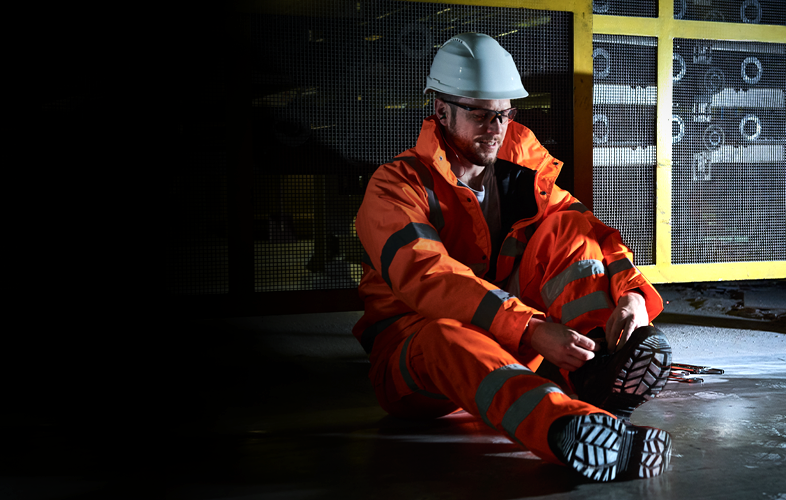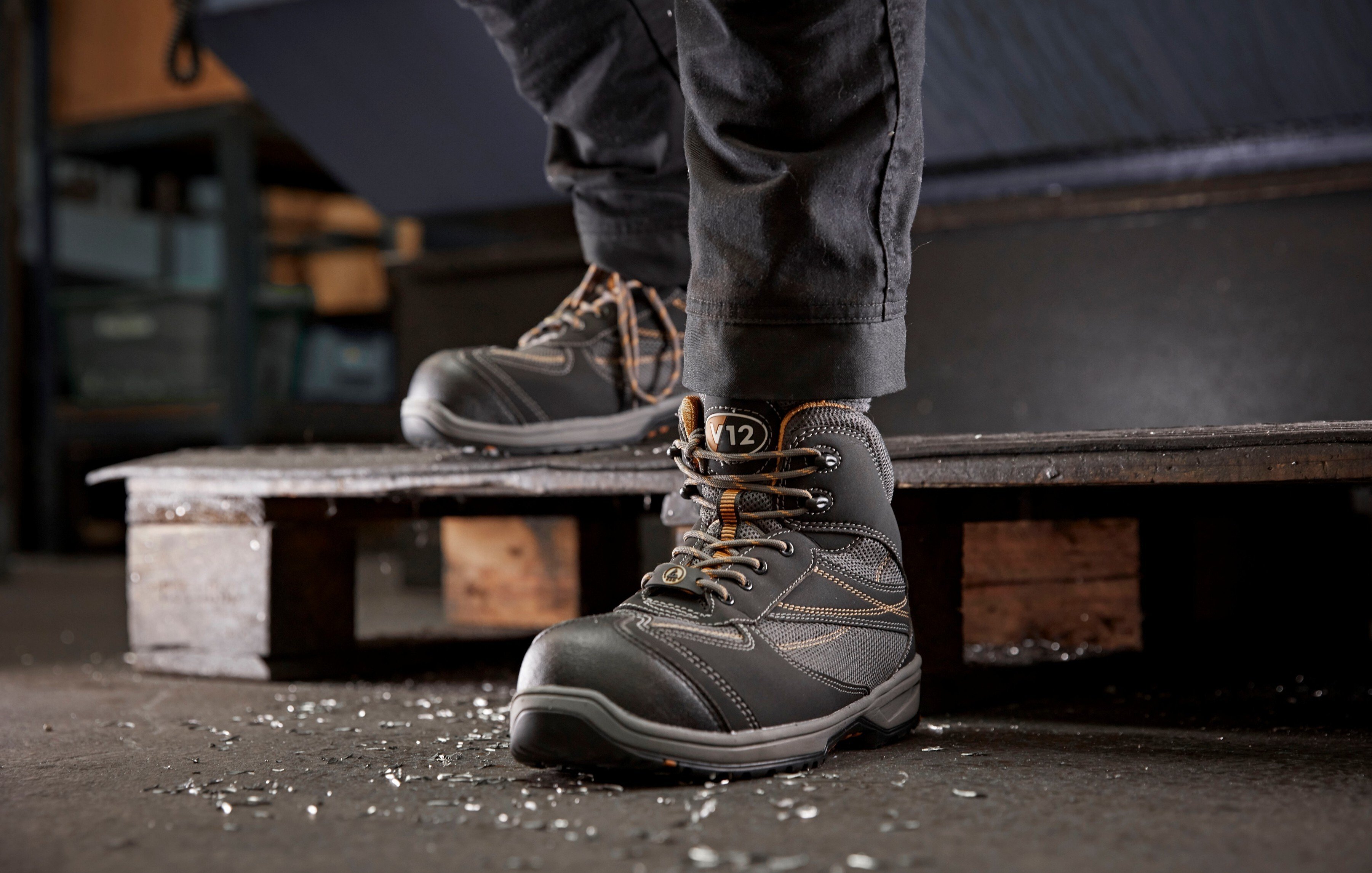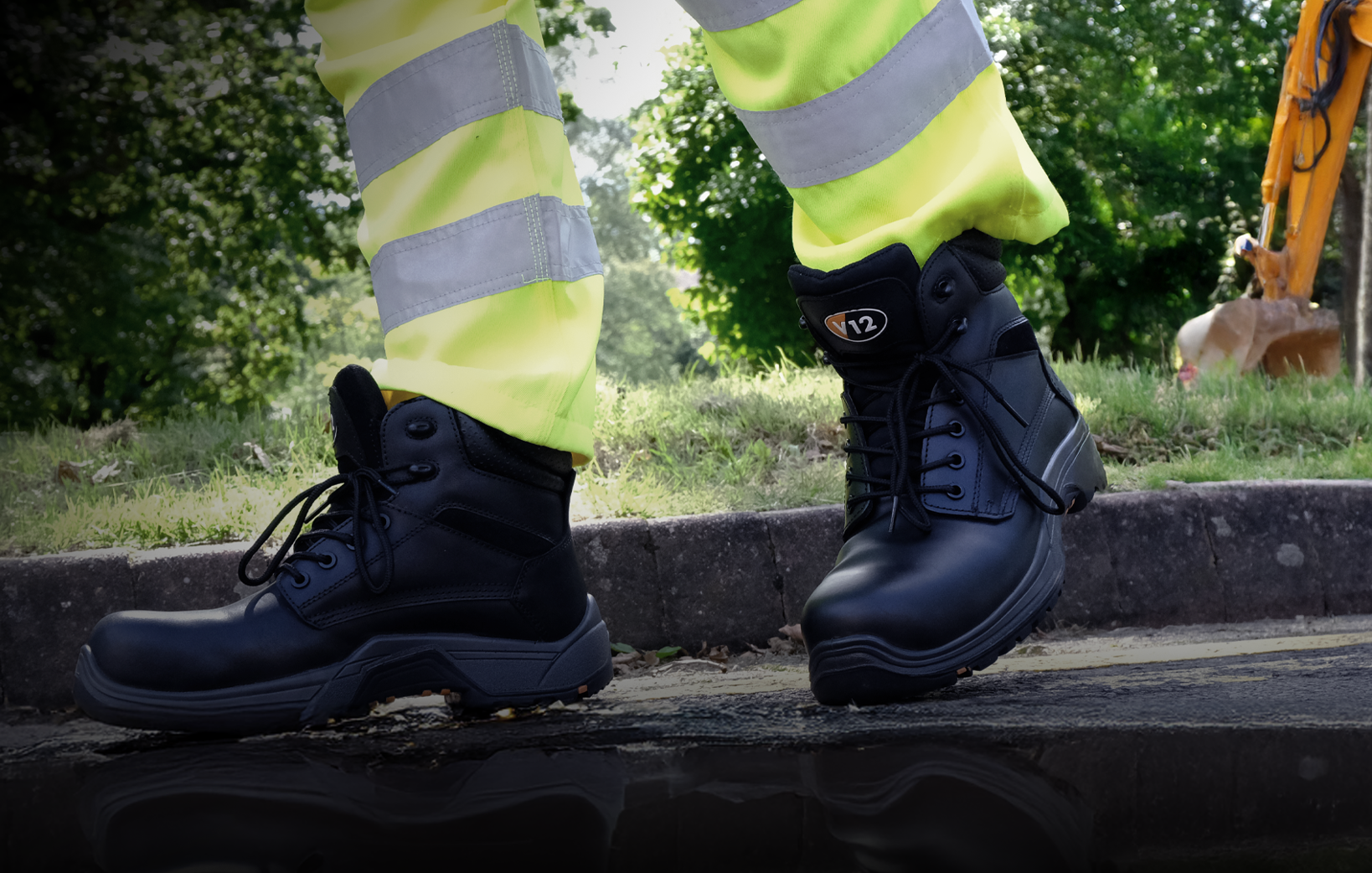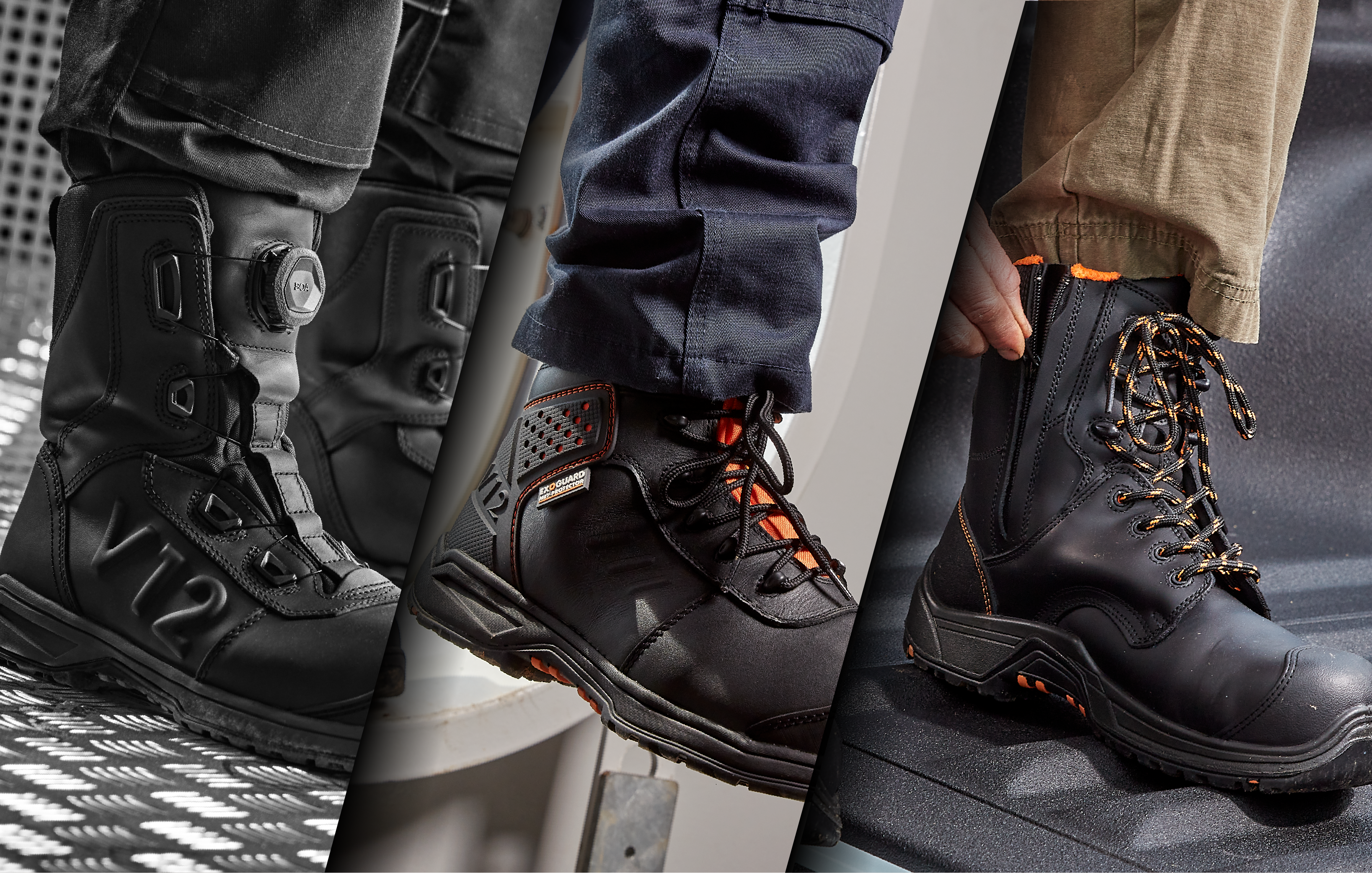EH - which stands for Electrical Hazard - safety footwear has been the topic of a lot of discussion recently, particularly since the HSE's announcement that the EH marking could be, due to its standard type and testing procedure, misleading the wearer about how effective it is in protecting against electrocution.
And any confusion over PPE to guard against electrocution may lead to serious accidents – so that’s why in this blog, we’re going to explore the EH safety standard, answer some frequently asked questions, and tell you what type of footwear you might need to keep your team safe.
WHAT IS EH FOOTWEAR?
An EH boot is made from non-conductive materials which decreases the flow of electricity through the shoe and to ground. This reduces the possibility of electrocution.
It is important to note that EH marked footwear should only ever be seen as a secondary source of PPE.
Many people understandably assume that footwear marked with EH is part of the European safety standards – but it is actually not an EN ISO 20345 standard. EH is in fact a safety rating from the ASTM (American Society for Testing and Materials).
Currently, no such equivalent European ISO standard for EH exists, and many believe this is a conscious decision to avoid confusing or misleading wearers or buyers.
THE PROBLEM WITH THE EH MARKING
1. LIMITED TESTING
The fact that EH is a safety feature from a set of American safety standards isn't a problem in itself. What is problematic is that, according the HSE:
“The ASTM Standard contains a single test procedure representative of a very restricted working environment. In many cases, these limitations have not been made clear on the packaging or the product instructions. This may result in the wearer believing the product has been tested to protect them in circumstances where it doesn’t.”
So, it’s important not to be misled by the authority that a safety marking like EH carries. It is understandable that procurers or Health and Safety Managers may assume footwear marked with ‘Electrical Hazard’ will fully safeguard workers from electrocution. But this isn’t the case.
EH footwear’s restricted testing environments mean the protection it gives the wearer against electrocution is comparatively limited:
- EH boots don’t protect the wearer against voltages exceeding 600V AC.
- An EH marking doesn’t mean the whole boot has electrical shock resistance; it’s just the sole with this property.
- EH footwear may be suitable for use in environments where there is potential for accidental exposure to AC voltages.
Due to this, EH work boots are not meant to be the primary safety precaution for working around electricity.- When conducting live electrical work, EH boots should be deemed as secondary PPE. When working around hazards like energised conductors, cables or circuits, wearers’ protective equipment should offer more fundamental protection such as arc flash suits or electrical safety gloves. (note: these are examples - the nature of your primary PPE will depend on the specific environment and hazards of your workplace)
Remember, primary PPE is any safety work wear or equipment that provides the most effective level of protection, so if your team are engaged in live electrical working, EH boots should not be deemed as such.
Due to all of these factors, the guidance is simple:
Footwear tested to the EH Standard is NOT SUITABLE for live electrical working.
2. eh properties are easily compromised
The other reason EH footwear should not be seen as a primary electrical safety solution is because they can very easily lose their electro-hazard properties if they’re worn in the wrong environment.
EH footwear will not offer protection from electric shock if:
- The outsole is pierced by a sharp object. So, EH boots should not be used if there’s a danger of underfoot penetration from items like nails or screws.
- It is exposed to water. The EH Standard does not include any testing for wet or even damp environments and should only be worn in dry environments.
- (According HSE guidance) “there is a risk of direct ground contact, or ‘earthing’ of the upper. This includes soft, lose ground, (gravel, sand, soil, grass or mud), or ladders, steps and gantries. This is the case because the EH standard does not test the upper of the product, so may not be suitable.”
The manufacturer's responsibility
-2.jpg?width=384&height=348&name=V12%20staff%20wellbeing%20(rail)-2.jpg)
If you’re in charge of procuring footwear for your team to protect them against electrical hazards, it’s your responsibility to be aware of misleading product claims.
Often, EH footwear not offering adequate protection from electrocution protection is lost in the small print of product disclaimers. Be wary of manufacturers claiming their boots have ‘Electrical Hazard’ protection with other safety features, as this protection will often be voided when used in the wrong application.
Avoid brands marketing EH products as ‘waterproof’ or ‘water-resistant.’ EH footwear can't have water repellent qualities. In fact, a boot with a leather or fabric upper can be conductive when in contact with water and water vapour.
Also, boots marketed as EH but feature midsole protection should be avoided. An EH boot has its electro-protective properties in its sole, so if that sole is pierced by sharp objects or rugged terrain, its EH properties are voided. If a pair of EH boots are labelled as having underfoot protection and water-repellence, this is arguably only true until they start being worn.
WHAT THE EXPERTS THINK
Some safety footwear manufacturers believe that while EH doesn’t give full protection when working around live electrics, some protection is better than none. However, trade bodies and safety agencies including the BSiF and HSE have pointed out that if the markings on safety boots give people the impression they have specific protective properties without making it clear they might not be adequate in a lot of safety scenarios, it gives people a false sense of safety security, and they might end up taking risks without the right levels of protection.
So to clarify...
EH footwear is NOT:
- Tested against (and therefore not suitable for working around) direct current (DC) voltages.
- Tested against (and therefore not suitable for working around) water.
- Effective if the upper is cut or damaged, so should not be worn outside or face rugged or harsh use.
My team have been using EH footwear – is this still safe?
It all depends on what the hazard is. If your team have been working with EH boots as a secondary source of PPE against accidental electrocution in a low voltage environment, they could be perfectly safe.
EH safety boots can also ‘work harder’ to offer great protection if there are better or further-reaching safety measures put in place to isolate the risk of electrical shock, and if this is the case, your team can feasibly continue using EH boots.
However, if you feel that your workers need protective footwear to safeguard them against electric shock and EH footwear won’t offer them that level of safety, then dielectric boots are the solution.
Dielectric boots
Dielectric boots are known as ‘category III’ safety footwear. The boots and shoes within this category are part of the EN 50321 standard, which specifies the requirements and testing for personal protective equipment including insulating footwear and overboots which protect the wearer against electrocution when engaged in live work.
This protection is far more specialised than general safety footwear, as if these boots fail to protect, a serious injury or death of the wearer is highly likely. Dielectric boots are tested to high voltages and capable of being used in wet conditions. An item that is dielectric basically doesn’t conduct electricity, which, in this case is why these types of boots are a must - and recommended by the HSE - if your team are working in environments that require protection from electrocution.
Remember, regulation 2016/425 relating to the design and manufacture of PPE requires that any PPE claiming protection against electrical shock should be regarded as a Category III item.
Protective capabilities
So, hopefully now you can see the protective properties of EH safety boots, but perhaps more importantly, you are also aware of the protective capabilities they don’t offer.
And often, part of the reason for this confusion has been due to the amount of Electrical Standards for safety footwear that exist. If you want to learn all the differences so you can get the right protective footwear for your team, read our easy-to-follow blog below and each safety standard will be clear in a few minutes.





